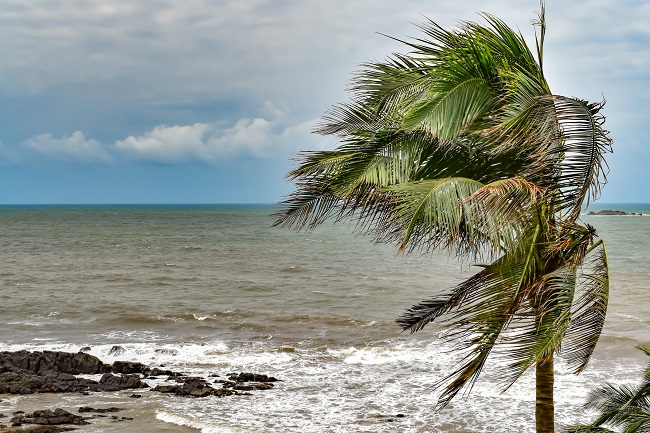Dec 13, 2025
Dec 13, 2025
According to NOAA experts, El Nio, an ocean-heating phenomenon, is expected to start in the next months and last through 2024. El Nio, an ocean-warming phenomenon, is over 90% certain to occur this year. Experts have warned that it is expected to start in the upcoming months and that there is a fair probability it will continue into 2024 and have a significant impact.

El Nino, "the little boy" in Spanish, is a climate phenomenon characterized by the warming of the sea surface temperatures in the central and eastern tropical Pacific Ocean, particularly along the coasts of South America. It occurs irregularly, typically every two to seven years, significantly impacting weather patterns worldwide. El Nino is part of a larger climate cycle known as the El Nino-Southern Oscillation (ENSO).
An El Nino event is associated with a weakening or reversing of the prevailing trade winds in the Pacific Ocean. Usually, the trade winds blow from east to west, pushing warm surface waters toward the western Pacific. This causes calm, nutrient-rich waters to rise to the surface along the western coasts of South America, resulting in productive fishing grounds. During an El Nino event, the trade winds weaken or reverse, disrupting the standard oceanic and atmospheric circulation patterns. As a result, the warm surface waters that were pushed to the western Pacific moved back eastward toward the coasts of South America. This leads to a significant increase in sea surface temperatures in the central and eastern tropical Pacific.

The warming of the sea surface temperatures affects global weather patterns. It influences the position and strength of the jet stream, which can affect storm tracks, precipitation patterns, and temperatures in different regions. El Nino events often result in increased rainfall in the western Pacific, including parts of Indonesia and Australia, while causing drought conditions in parts of South America, particularly along the western coasts. The impacts of El Nino can vary depending on its strength and duration. Extreme El Nino events can have far-reaching effects on global climate patterns, affecting agriculture, fisheries, and weather-related hazards such as hurricanes, droughts, and floods. On the other hand, the counterpart of El Nino is La Niña, which represents the cooling of the sea surface temperatures in the central and eastern tropical Pacific. La Niña events typically follow El Nino events and have opposite impacts on weather patterns.
Understanding and monitoring El Nino events is crucial for climate scientists, meteorologists, and policymakers. It provides valuable information for climate predictions and helps societies prepare for and mitigate the associated impacts on agriculture, water resources, and other sectors. The first recorded observation of El Nino occurred in the early 17th century by Spanish explorers along the coasts of South America. However, it wasn't until the 20th century that scientists began to study and understand the phenomenon more comprehensively. Since reliable records have been kept, approximately 23 El Nino events have been identified from 1900 to 2021. These events have varied in intensity and impact. Some of the notable El Nino events include:
1982-1983 El Nino:
This event is often called the "super El Nino" and is considered one of the strongest on record. It had significant global impacts, including severe droughts in Australia and parts of Africa, heavy rainfall in South America, and disruptions to fisheries and marine ecosystems.
1997-1998 El Nino:
This event is another significant El Nino that affected regions across the globe. It caused widespread flooding in several countries, including Peru and Ecuador, and droughts in Indonesia and the Philippines. It also had implications for global weather patterns, including altering hurricane activity in the Atlantic.
2015-2016 El Nino:
This event was classified as one of the most decisive El Nino events of the modern era. It led to extreme weather conditions, such as droughts in Southeast Asia and Africa, heavy rainfall in parts of South America, and a record-breaking global average temperature in 2016.
It's important to note that El Nino events are part of a natural climate cycle and occur irregularly. The timing, strength, and impacts of El Nino events can vary, and they typically last for several months to a year or more. Scientists continue to monitor and study El Nino and its effects to understand its patterns better, improve predictions, and assess its relationship with climate change.
El Nino events can have varying impacts on different regions, including South Asian countries like Pakistan. The specific effects of El Nino on Pakistan depend on the strength and duration of the event. Here are some ways in which Pakistan can be affected by El Nino:
Drought:
El Nino events often lead to below-average rainfall in parts of South Asia, including Pakistan. The weakened monsoon rains during El Nino years can result in drought conditions, reduced water availability, and agricultural losses. Droughts can harm crop production, water resources, and livestock, impacting food security and the livelihoods of rural communities.
Heatwaves:
El Nino events can contribute to higher temperatures in certain regions, including South Asia. Pakistan may experience prolonged heat waves and scorching weather conditions, leading to heat-related illnesses, power shortages, and stress on vulnerable populations.
Altered rainfall patterns:
While El Nino is generally associated with reduced rainfall in South Asia, its impacts on specific regions within Pakistan can vary. Some parts of the country may experience below-average rain, while others may receive increased precipitation during El Nino years. These alterations in rainfall patterns can disrupt agricultural activities, affect water availability, and potentially lead to flash floods or waterlogging in certain areas.
Disruption of fisheries:
El Nino events can affect marine ecosystems and disrupt fisheries in the Arabian Sea, which borders Pakistan. Changes in ocean temperatures and currents can lead to the displacement of fish populations, impacting fishing communities and the fishing industry.
Regional climate variability:
El Nino can influence weather patterns beyond Pakistan's borders. It can affect the intensity and tracks of tropical cyclones in the Arabian Sea, potentially increasing the risk of hurricanes and related storm surges along the Pakistani coastline.
It is important to note that while El Nino events can have significant impacts, other factors, such as local weather patterns and climate change, can also influence Pakistan's climate and its vulnerability to these events. Monitoring and understanding these climate phenomena is crucial for effective planning, preparedness, and adaptation strategies to minimize the potential impacts on various sectors, including agriculture, water management, and disaster risk reduction.
Images c) istock.com
10-Jun-2023
More by : Dr. Naseem Sheikh